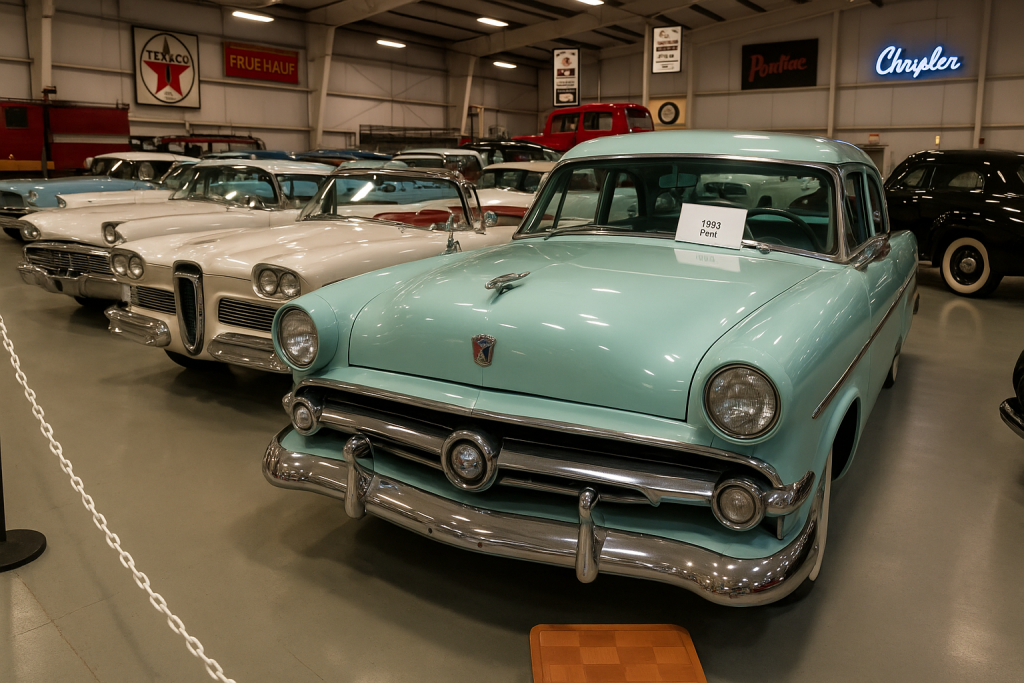
Classic cars aren’t just about style or nostalgia—they’re pieces of living history. But if you’ve ever asked yourself, “How old is a classic car?”, you’re not alone. Whether you’re looking to buy, restore, or register a vehicle, understanding what officially qualifies as a classic car can help you make smarter decisions. For deeper insights and community knowledge, sites like capitolacarshow.com offer great resources for enthusiasts at every level.
What Defines a Classic Car?
At a glance, the term “classic car” sounds simple-old, stylish, and collectible. But legally and culturally, the definition can vary depending on the country, insurance providers, auto clubs, and government agencies.
So, how old is a car to be a classic? In most cases, a car must be at least 20 to 25 years old to earn the “classic” title. However, that’s just the baseline. Here’s how different sources define it:
- Insurance companies (like Hagerty or State Farm): Typically classify best classic cars as those 25–30 years old, provided they’re in good condition and not used for daily driving.
- DMVs or vehicle registration authorities: Some states offer “classic” or “antique” license plates to cars 25 years or older, although other criteria like originality and maintenance may apply. These plates may come with driving restrictions, such as limiting use to parades, exhibitions, or occasional driving..
- Car clubs Often have their own lists of eligible vehicles, usually focusing on cars built between 1915 and 1948. Membership can offer access to exclusive events, valuation tools, restoration advice, and historical records that support a car’s classic status.
If you’re asking how old is a car to be considered a classic for legal, collector, or investment purposes, it’s best to check the relevant agency or organization’s criteria. The definition varies depending on who you ask-your local DMV might classify a car as classic once it’s 20 to 25 years old, while insurance companies may look at how the car is used and maintained.
Collectors often value originality, rarity, and historical significance, which means a heavily modified 30-year-old car might not make the cut. Always verify guidelines before assuming your vehicle qualifies, especially when paperwork, value, or tax implications are involved.
How Many Years Old Is a Classic Car?
There’s no single answer to how many years old is a classic car because different contexts have different rules. Still, here’s a breakdown:
| Type of Classification | Typical Minimum Age |
| Insurance Classic Car Policy | 20–30 years |
| DMV “Classic” or “Antique” Plate | 25+ years |
| Classic Car Club of America | 25+ years (specific models) |
| General Public Perception | 20+ years |
So, how old is a classic car have to be? A safe rule of thumb is 25 years, but always check specific requirements based on your purpose.
Classic vs. Antique vs. Vintage
These terms are often used interchangeably, but each has its own meaning in the automotive world:
- Vintage cars: Typically built between 1919 and 1930.
- Antique cars: Generally defined as 45 years or older.
- Classic cars: Usually 20–40 years old, often with historical interest and collector value.
Understanding this difference helps when buying, registering, or insuring a vehicle.
Why Age Isn’t the Only Factor
Asking “How old is a classic car?” is a great starting point-but age alone doesn’t guarantee classic status. The car’s condition, rarity, cultural impact, and originality also matter. For example, a well-maintained 1995 Toyota Supra could be more desirable and valuable than a neglected 1980 sedan.
Classic status also affects your wallet. Cars officially recognized as classics may be eligible for:
- Reduced insurance premiums
Classic car insurance policies often cost less because these vehicles are typically driven less frequently and maintained more carefully. - Special license plates
Many states offer vintage or classic plates, which can be cheaper and even exempt the vehicle from certain usage restrictions. - Exemption from emissions tests (in some regions)
Older cars may be exempt from modern emissions standards, saving owners both time and money on testing and compliance. - Collector events and shows
Recognition as a classic can open the door to exclusive events, such as car shows and rallies, where owners showcase their vehicles and connect with fellow enthusiasts.
Collectibility: When Does a Car Become Iconic?
Car enthusiasts often agree that a vehicle becomes collectible when it hits a certain age and represents a cultural moment or design milestone. That’s why some cars from the 1990s and even early 2000s are starting to enter the classic spotlight.
You might wonder, how old is a car to be a classic if it’s a limited edition or cult favorite? In such cases, some models earn classic status even before they hit the 25-year mark due to their legacy, performance, or fan base.
Summary: So, How Old Is a Classic Car?
To wrap it all up:
- Typically 20 to 25 years old is the minimum age for a car to be considered “classic.”
- How old is a classic car have to be? At least 25 years to meet most legal or insurance definitions.
- How old is a car to be considered a classic? It depends on who’s defining it-but aim for that 25-year mark.
- Other elements like rarity, historical value, and condition also affect a car’s “classic” status.
Final Thoughts
Whether you’re restoring your dad’s old Mustang or eyeing a ’90s Porsche, understanding the official guidelines helps you make informed choices. And next time someone asks, “How many years old is a classic car?”, you’ll know the answer isn’t just about the odometer-it’s about history, preservation, and passion.
